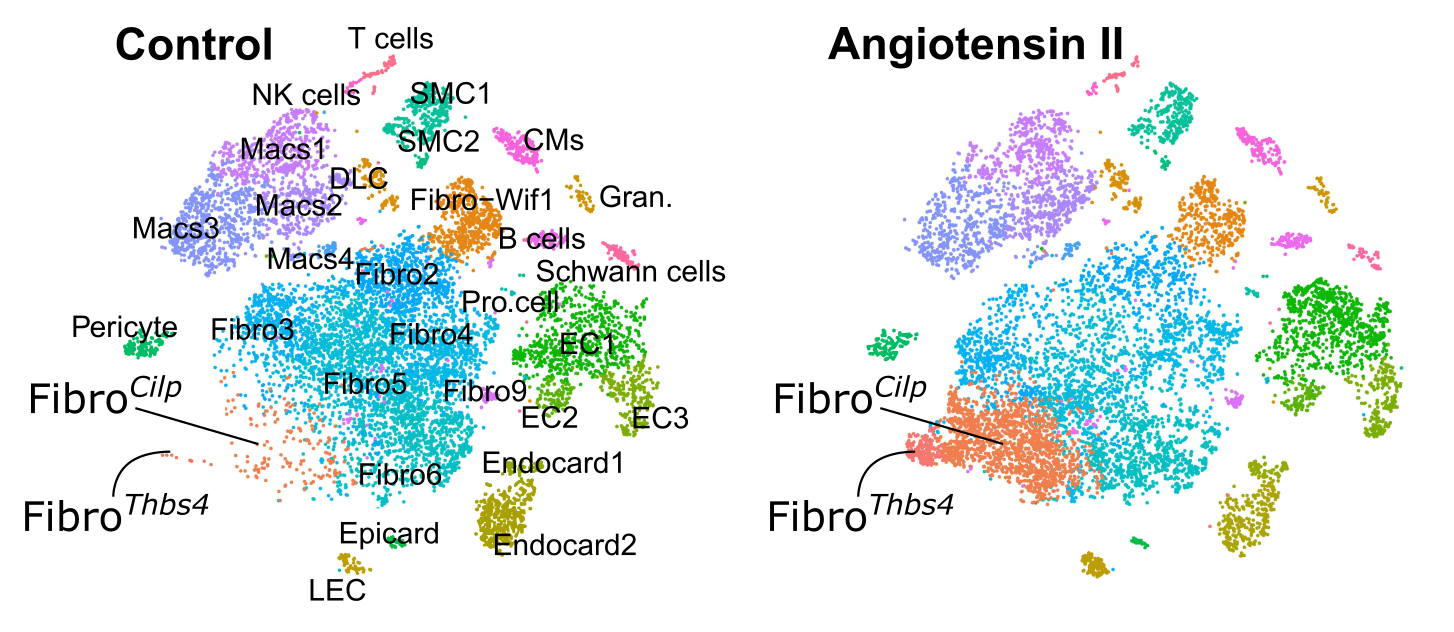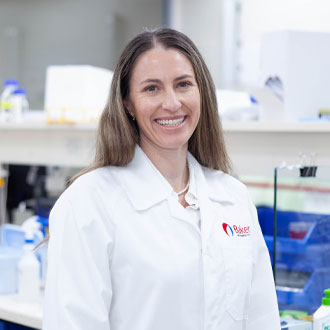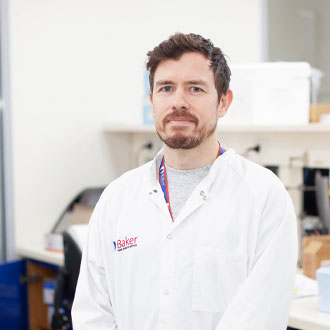About the Cardiac Cellular Systems laboratory
Heart failure is a leading cause of mortality worldwide. Resulting from a wide range of etiologies, heart failure is characterised by deleterious cardiac remodeling and decline in heart function, ultimately leading to organ failure and death. Currently there are no effective treatments for heart failure, and fundamental questions remain unanswered regarding the ways in which cardiac remodeling occurs and how it may be reversed.
Until recently the cellular composition of the heart was poorly defined. Using advanced genetic, flow cytometric and single cell transcriptomic approaches, our lab has shed new light on the cellular constituents of the heart by demonstrating that the heart is comprised of a complex and diverse ecosystem of non-myocytes (Figure 1: Skelly et al. 2018, Pinto et al. 2016, Pinto et al. 2012). Based on these discoveries, new avenues of cardiovascular research involving the targeting and manipulation of specific cell types and networks are now possible. Today, virtually nothing is known about how the ecosystem of non-myocytes in the heart operate as a cell network.

Figure 1: Understanding cardiac cellular diversity and phenotypes in tissue homeostasis and stress. Figure shows tSNE plots with dots represent individual cells. Fibro-Cilp and Fibro-Thbs4 that emerge after angiotensin II-induced fibrosis are indicated from McLellan et al., 2020.
Overarching aims
- Determine how pathological changes in cardiac cell networks contribute to the development of heart failure.
- Determine whether manipulating the cell network can influence cardiac remodeling and thus be used to prevent or treat cardiac pathologies (Figure 2).
Using single cell, data science, micro-anatomy and traditional mouse genetics approaches our research uses and integrative systems biology approach for uncovering fundamental processes governing cell networks in the heart.

Figure 2: Model of heart failure driven by pathological remodelling of the cardiac cell network elicited by cardiac insults (red) and consequent responses (blue).
Key areas of ongoing research
- Determining the plasticity and elasticity of cardiac cell networks in the context of physiological stressors such as obesity and hypertension.
- Determining the molecular and cellular drivers of these processes.
- Development of unique genetic, computational biology, and imaging approaches to precisely study diverse cell populations in the heart.
Key areas of technical expertise
- Single cell biology — including single-cell RNA sequencing, high-dimensional flow cytometry and image cytometry.
- Multidimensional imaging — including 3D imaging and spatial mapping of cellular interactions.
- Mouse genetics — including development of novel cell- and organ-specific genetic tools.
Key publications
- High-resolution transcriptomic profiling of the heart during chronic stress reveals cellular drivers of cardiac fibrosis and hypertrophy
Circulation 2020 - Cardiac cellularity is dependent upon biological sex and is regulated by gonadal hormones
Cardiovasc. Res. 2020 - New perspectives of the cardiac cellular landscape: mapping cellular mediators of cardiac fibrosis using single-cell transcriptomics
Biochemical Society Transactions 2020







